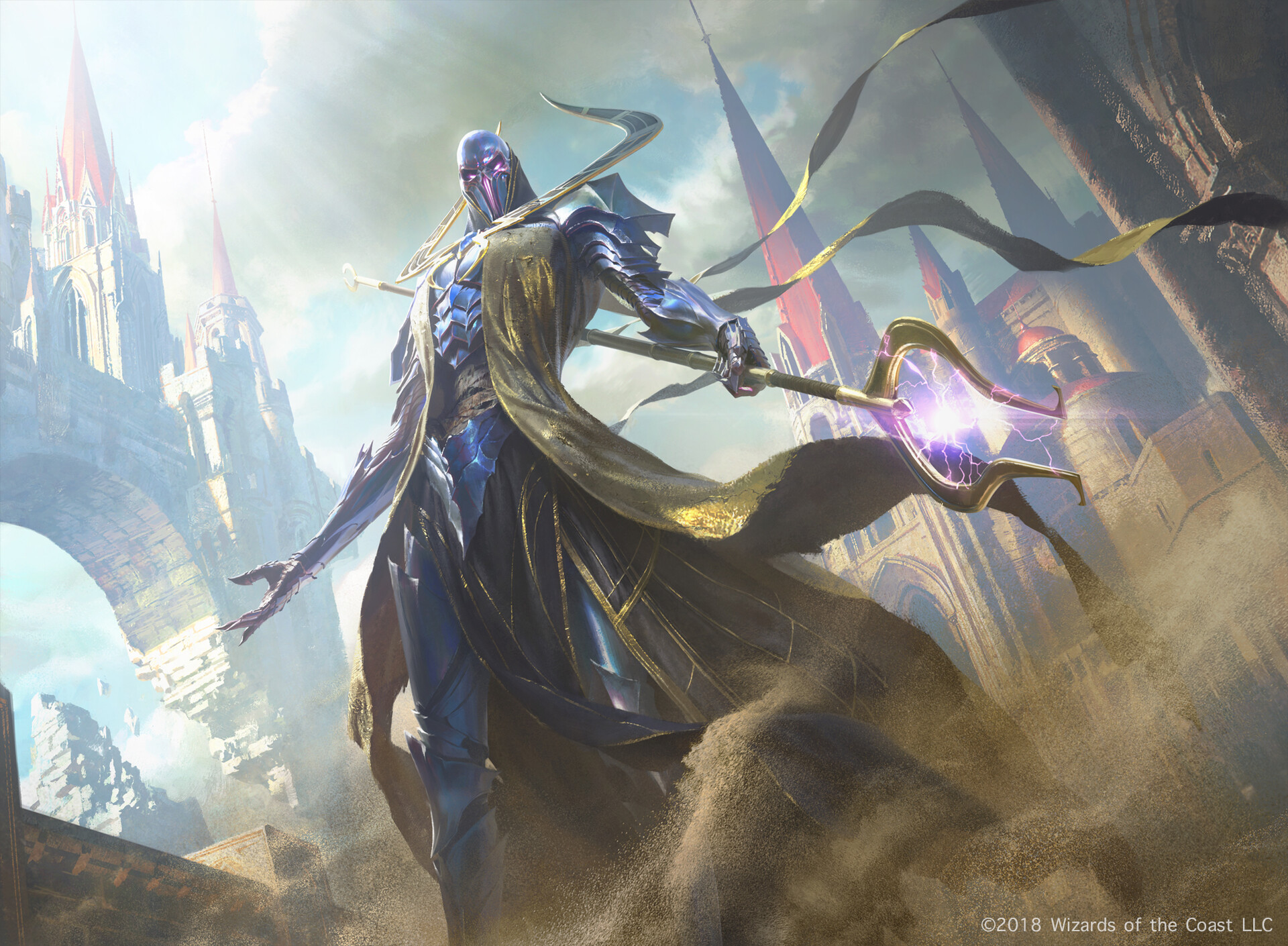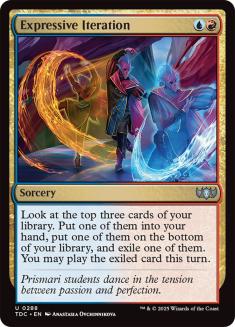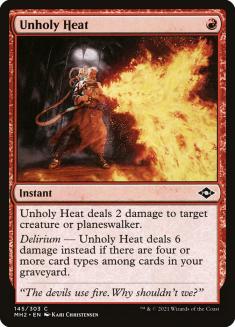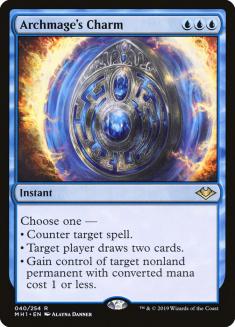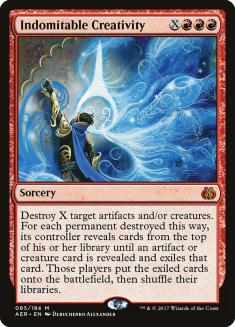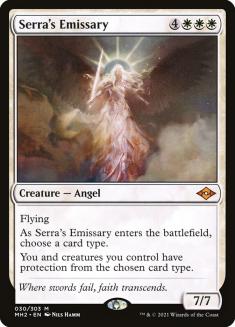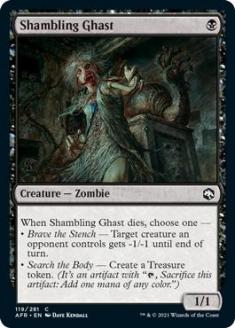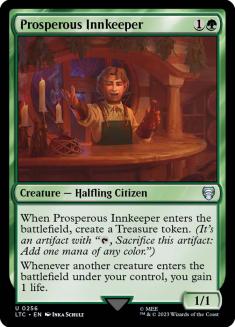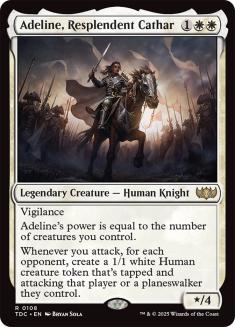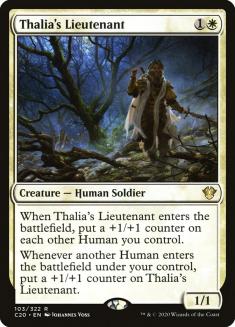This week, the Red Bull Untapped series offered us our first look at competitive Historic since the banning (yes, I said banning—I’m done with the suspended nonsense) of Memory Lapse and Tibalt’s Trickery. The event could not have come at a better time as players attempt to prepare for this weekend’s Magic Arena Qualifier event.
While I usually focus on hunting for new and obscure lists, with a format as unexplored as current Historic, I feel it would be more useful to instead spend some time laying out the pillars of the metagame as I see them, and then highlight a few other options that interact favorably with those pillars. Presently, there are four core buckets that represent the upper tier of the Historic metagame.
Arclight Phoenix / Delver of Secrets / Dragon’s Rage Channeler
Creatures (14)
Lands (17)
Spells (29)

Creatures (26)
- 4 Bomat Courier
- 4 Seasoned Pyromancer
- 1 Bonecrusher Giant
- 1 Ox of Agonas
- 4 Magmatic Channeler
- 4 Dragon's Rage Channeler
- 4 Blazing Rootwalla
- 4 Managorger Phoenix
Lands (6)
Spells (28)

Creatures (14)
Lands (14)
Spells (32)

As the Historic card pool gets more and more powerful, it only makes sense that archetypes like these start to etch out top-tier positions. For my money, Izzet Phoenix sits in Tier 0 of the format (alongside one other deck that we’ll get to later). The addition of Consider means that you’re no longer playing the “which awful cantrip do I have to rely on” game, and Dragon’s Rage Channeler and Smoldering Egg are the perfect additions to round out the threat suite. Add in the best card-drawing spell in the format (Expressive Iteration), the best removal spell in the format (Unholy Heat), and now the best counterspell in the format (Archmage’s Charm), and is it any wonder this deck found itself at the top of this Red Bull Untapped event?
Of course, this isn’t the only way to go about a tempo-ish game plan in Historic. Mono-Red Madness can get up to a lot of the same kind of shenanigans, with cheap threats, explosive starts, and good card selection options. Why lean towards Mono-Red Madness over Izzet Phoenix? Well, slightly decreased graveyard reliance is one good reason, and higher threat density is also appealing when the rest of the format has its sights set on dealing with the recursive game of Arclight Phoenix. I’m still leaning Izzet, but it’s always good to have the curveball in your back pocket.
Izzet Delver feels like the dark horse here, and plenty has been said about Delver of Secrets getting outmoded as a card. I won’t go that far. Yes, Dragon’s Rage Channeler is probably the better threat, but that doesn’t disqualify Delver of Secrets. There’s just got to be a strong reason to want a super-high spell count and prioritize one-mana plays over two-mana plays. If the format moves in a combo- or stack-centric direction (yep, we’ll talk about it later), Delver might still have legs. If nothing else, I like the removal suite of Pillar of Flame and Fading Hope into Izzet Phoenix, and maybe you can even deckbuild yourself into an edge in that matchup without giving up a ton elsewhere.
Blue-Based Control
Creatures (3)
Lands (21)
Spells (36)

Creatures (3)
Planeswalkers (3)
Lands (26)
Spells (28)

The loss of Memory Lapse is going to sting for blue-based control. These decks have always been at their best in the Historic format when they’re actively working towards closing games, and oftentimes Memory Lapse forced pilots to be cognizant of this requirement. With the card gone, I’m worried we might see control content to play Teferi, Hero of Dominaria-based end-games. Thankfully, neither of the two examples here have tricked themselves into making that horrible mistake.
Jeskai Indomitable Creativity is making some other calls I don’t love though. Mainly, I’m not convinced Serra’s Emissary is a strong enough knockout punch. You can go wide around it. It’s far from impossible to kill, it’s raceable, and it’s easy to be blinded by the games it dominates, of which there are many. I just think that given the severe deckbuilding cost you are paying to play the card, you need to ask for more upon its resolution. Especially with the loss of Memory Lapse, you just aren’t going to control the early turns of the game as well. Serra’s Emissary will disappoint far more often these days.
If I were to play control, I like the proactivity of the Magma Opus / Torrential Gearhulk package instead. You get to play games ahead of curve thanks to Magma Opus’s Treasure, and Gearhulk now represents the kind of out-of-nowhere clock this deck really benefits from. It’s edging closer to combo-control than pure control, and that’s just a far more realistic plan in a format like Historic. The Memory Lapse loss still stings, but at least you have Turn 3 plays that can catch you up, and you aren’t saddled with weird cards and bizarre draws of mismatched pieces like the Jeskai Indomitable Creativity decks.
Jund / Dreadhorde Arcanist
Creatures (15)
Lands (19)
Spells (26)

Creatures (16)
Lands (22)
Spells (22)

Creatures (30)
- 4 Llanowar Elves
- 4 Priest of Forgotten Gods
- 4 Mayhem Devil
- 2 Yawgmoth, Thran Physician
- 4 Gilded Goose
- 4 Woe Strider
- 1 Callous Bloodmage
- 4 Prosperous Innkeeper
- 3 Shambling Ghast
Lands (22)
Spells (8)

Now it’s time for our other entrant into Tier 0. Jund Food (Jegantha) has always been one of Historic’s best decks. Sure, during the fever dream that was the Historic format infiltration by Brainstorm, blue decks learned to keep pace with the Jund menace, and I’d argue that Izzet Phoenix is still doing so. It just took so much for those decks to even enter Jund Food’s neighborhood, and did it ever give up the crown? Cauldron Familiar plus Witch’s Oven plus Mayhem Devil backed up by Thoughtseize can beat anything with the right draw, and thanks to Trail of Crumbs, the deck basically puts together those draws at will.
However, Jund also has access to another build, and a couple of seemingly innocuous prints have done a lot to dramatically improve that gameplan’s consistency.
Jund Citadel is so good at reaching six mana these days, and in moments when the format isn’t respecting what Bolas’s Citadel is capable of, it often equates to an “I win” button. Grafdigger’s Cage is not the format staple is was just a couple of months ago, and it definitely has me considering whether it’s the right time for this more combo-centric take on Jund.
Then there’s poor Rakdos Arcanist. All this deck does is show up big in big events. Despite that fact, it never seems to pick up metagame share, and never seems to crack Historic’s top tiers. It’s probably the best pure Thoughtseize deck in the format given its embrace of Dreadhorde Arcanist — a card so powerful that it’s banned in Legacy. Now granted, that has a ton to do with format context. Still, it’s an impressive pedigree, and I don’t think Dreadhorde Arcanist has received the love it deserves in Historic.
I’ve never been on board with Kroxa, Titan of Death’s Hunger and Stitcher’s Supplier in these decks, and I think that’s even more true given the arrival of Dragon’s Rage Channeler on the scene. Just play good, cheap threats, backed up with recursion from Lurrus of the Dream-Den and Kolaghan’s Command. If you need a sideboard pivot, look to Young Pyromancer. Sometimes the old ways really are the best.
Tribal / Creatures
Creatures (31)
- 4 Llanowar Elves
- 2 Scavenging Ooze
- 2 Scrapheap Scrounger
- 4 Steel Leaf Champion
- 2 Kraul Harpooner
- 4 Pelt Collector
- 1 Questing Beast
- 4 Kazandu Mammoth
- 4 Old-Growth Troll
- 4 Werewolf Pack Leader
Planeswalkers (2)
Lands (15)
Spells (12)

Creatures (33)
- 3 Thalia, Guardian of Thraben
- 3 Thraben Inspector
- 4 Thalia's Lieutenant
- 1 Dauntless Bodyguard
- 4 Ranger-Captain of Eos
- 1 Giant Killer
- 4 Luminarch Aspirant
- 4 Elite Spellbinder
- 4 Esper Sentinel
- 3 Brutal Cathar
- 2 Adeline, Resplendent Cathar
Lands (12)
Spells (15)

Creatures (31)
- 3 Merrow Reejerey
- 3 Silvergill Adept
- 4 Master of the Pearl Trident
- 4 Kumena's Speaker
- 4 Merfolk Mistbinder
- 3 Merfolk Trickster
- 2 Mistcaller
- 1 Glasspool Mimic
- 3 Svyelun of Sea and Sky
- 4 Shoreline Scout
Lands (16)
Spells (13)

Maybe it’s a good thing that Jund Food (Jegantha) exists to keep creature decks in check, because these decks are beginning to look scary. Green-based aggro picking up a splash continues to make waves in Historic due to its absurd rate for creatures and just enough disruption. It’s straightforward and effective, and if you’re only getting into Historic for the first time, I think you could do much worse than choosing this deck.
Meanwhile, Selesnya Humans continues to tinker with its tools and it’s starting to find the right balance between aggression and disruption. I didn’t really think Adeline, Resplendent Cathar was going to make the jump to older formats, but now that I’ve had more time to play with the card, I wonder if it’s supposed to go as far back as Modern. That fourth point of toughness feels extremely generous, and the combination with both abilities from Thalia’s Lieutenant really kicks the card into overdrive.
You’ve also got to give respect to Selesnya’s sideboard options. Yasharn, Implacable Earth; Containment Priest; Skyclave Apparition; and Reidane, God of the Worthy catch much of what the format is about, even if they don’t show the strictest loyalty to the Human tribe.
I don’t think either deck is the best creature-centric strategy in Historic though. God help me… I think that title goes to Merfolk. I guess this really shouldn’t be surprising. Some of the best cards in the archetype were shoehorned into the format to make this deck competitive and, well, mission accomplished.
Svyelun of Sea and Sky is just a card a lot of the format cannot reliably interact with, and is a much-needed piece of protection against the scourge of all creature decks, Jund Food (Jegantha). An abundance of lords and a shiny new two-power one drop in Shoreline Scout take care of the clock, and the one-mana disruption spells in Miscast and Fading Hope are just enough to matter. Let your preconceived notions of this tribe die… this deck is an excellent choice for this weekend’s event.
The Rest
Creatures (11)
Lands (18)
Spells (31)
- 3 Forest
- 3 Plains
- 4 Sterling Grove
- 4 Enchantress's Presence
- 1 Rest in Peace
- 1 Banishing Light
- 3 Solemnity
- 4 Wolfwillow Haven
- 3 Nine Lives
- 4 Paladin Class
- 1 Borrowed Time
Sideboard

Creatures (4)
Lands (21)
Spells (35)

With the pillars of the format established, we can start to identify what kinds of things seem to step outside the current paradigm. Unsurprisingly, I see some room for non-traditional combo. I don’t even know if it’s fair to call Selesnya Enchantress combo, though. It’s sort of just… annoying? Sticky?
Sure, Solemnity and Nine Lives are there to lock your opponents out of games, and they’ll do that quite often. But this deck is just next to impossible to interact with, even prior to establishing that combo. You can’t take a defensive posture against the combo because it will draw a billion cards and murder you with a Paladin Class-buffed Cave of the Frost Dragon. Or maybe it’ll just make its own creature-lands with Destiny Spinner and the mana from Sanctum Weaver. Try to get aggressive? Good luck doing that in sideboard games when a bunch of sweepers come in.
This deck covers a lot of play patterns and does so on the back of a very robust and redundant engine. You’re not prepared for this deck. Neither is anyone else. Does this make it a viable dark horse choice? It just might.
Now, we come to the terrifying part of this article. Yes, that’s an Alrund’s Epiphany / Galvanic Iteration combo deck. Yes, this is still Historic. And yes, I’m concerned it may be extremely good. This deck doesn’t stray much from the ideas explored in Standard, but it doesn’t have to. It’s just more proof of the resiliency and sheer size of the Galvanic Iteration / Alrund’s Epiphany end-game.
I wonder how deep this rabbit hole goes. Can you splice this deck with the Torrential Gearhulk / Magma Opus / Mizzix’s Mastery package?
Creatures (2)
Lands (16)
Spells (42)

While this article lays out the broad strokes of the format, multiple unanswered questions remain about both individual archetypes and the metagame at large. This is a great weekend for someone to take a shot with a lower-tier archetype and change the trajectory of Historic going forward. I can’t wait to see where the format stands heading into Innistrad: Crimson Vow.

